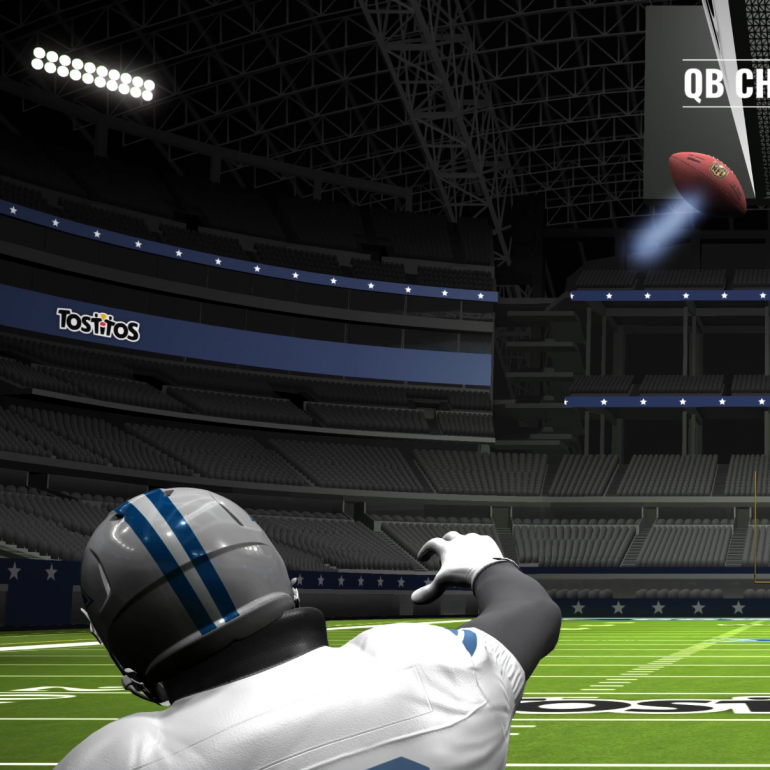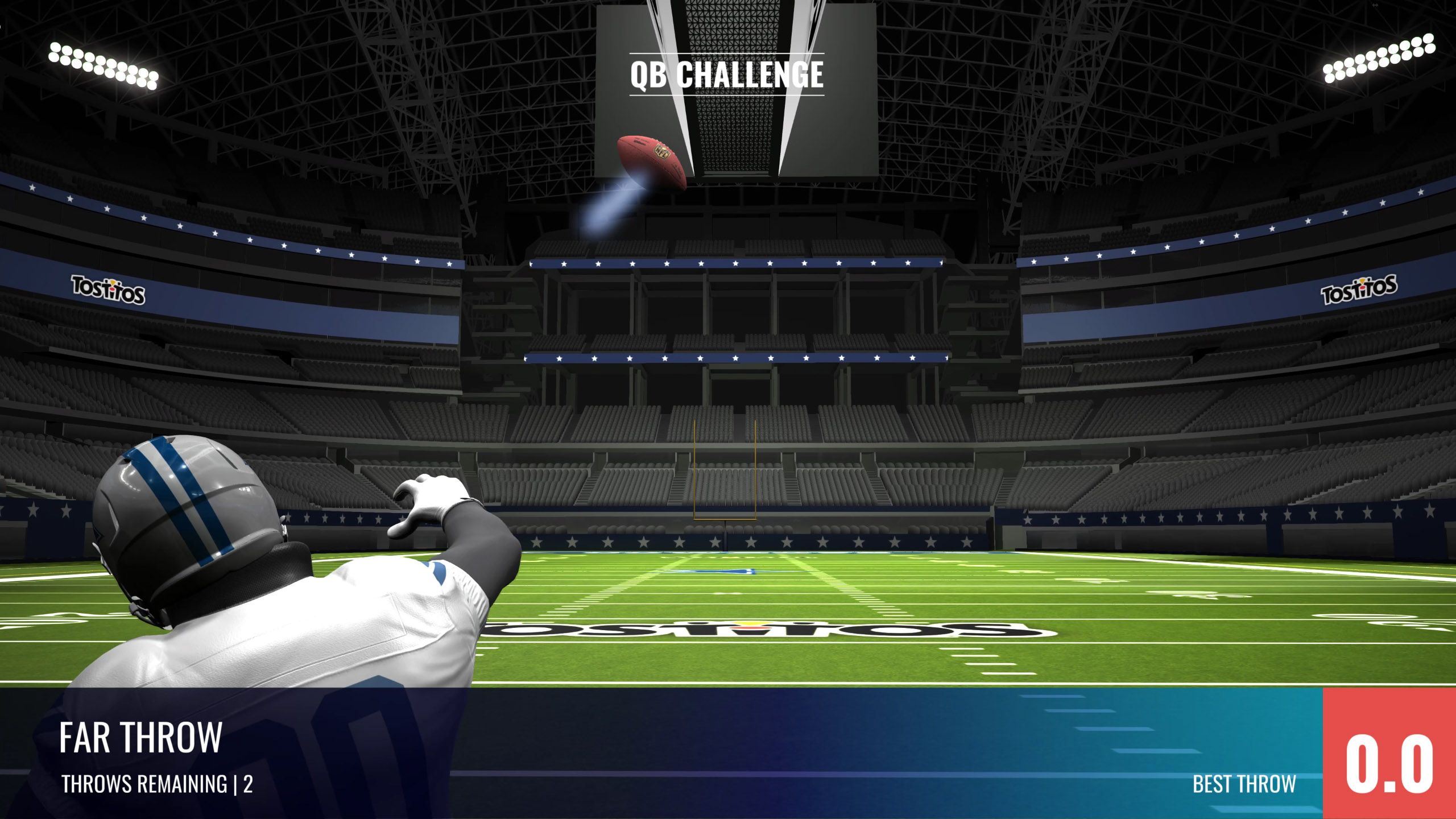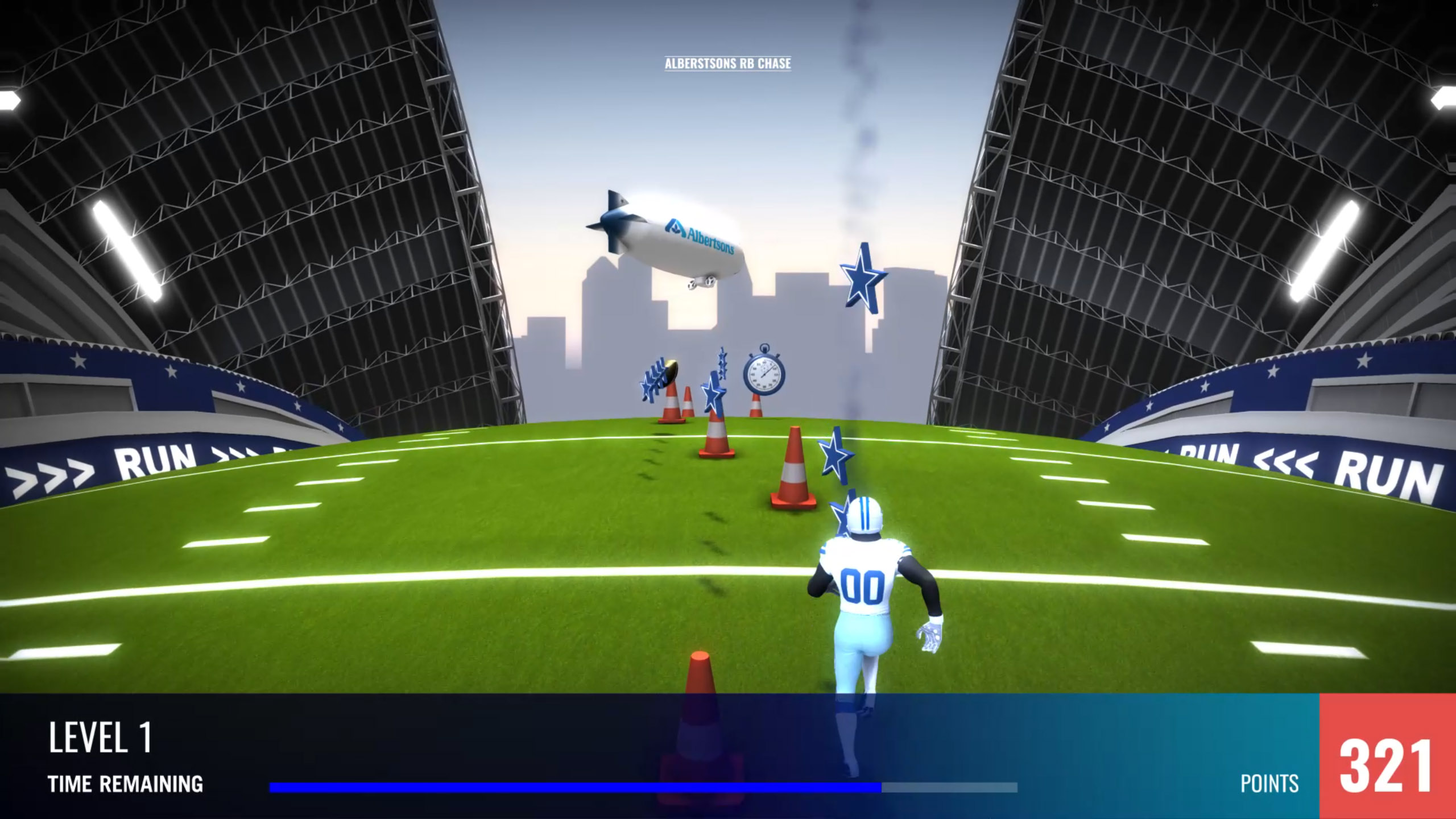
Interactive Kinect Minigames
01/02/2017
Prototype phase
We were approached by one of our clients in fall of 2016, to prepare prototypes for interactive kiosks. We cannot disclose final client, but they were all focused on sports and american football. After a very intense month, together with Lukasz Mroz (arbuzz.eu), we’ve delivered three mini games – football throw simulator, endless runner and puzzle game. All kinect driven, prepared for hi res, 3×1.64m displays. Obviously month of work for three minigames meant rather crude results, but overall effect was good and client decided to go ahead and take it into production.
Production
Finally, we developed three games for the client:
- Quarterback throw
- Endless runner
- Quiz game
Programming for all the games were done by Łukasz Mroz and my part was delivering the assets. Thanks to recent increase of my experience in Unity, I was able to shift my asset preparation to a whole new level. All the models, pbr materials and lighting were designed and tested directly in Unity, so I was able to develop exactly the look, I wanted it to have. I’ll focus on two first games, as the Quiz was relatively simple, 2d game.
Quarterback throw
The game environment was an iconic client’s stadium, which had to be modelled and textured. Our role was also to model additional objects like rugby ball, targets and the rigged and fully textured player model. The last part was particularly important as, thanks to use of Kinect, the player’s avatar was mirroring the movements and poses of the kiosk user in realtime. Also, the model was shown in a first plane, close to the camera, so we had to get the team specific details spot on.
Endless runner
It is a well known game, but our version had two twists to it:
First one was being controlled by kinect – so the player, in order to avoid obstacles and gather points, had to physically step aside to change lanes. With a fast pace, it turned out to be actually quite a difficult and physically demanding task to finish the two levels that we prepared for it.
Second twist, or rather bend, was that all our geometry was placed on an infinite revolving sphere. There are many ways now to achieve this (with great Unity plugins at asset store) but back then, we had to do it manually, creating a procedural ground sphere and rigging the track objects so they could’ve been bent using standard bone system. It also had to be dynamic, as the sphere’s radius was changing with the gameplay.
It turned out that rigging the architectural objects, so they can be bent into an arc is not a trivial task and I’ve had to prepare a special weight distribution workflow and formula to make it look right.
© 2025 Boros Łukasz | Theme by Eleven Themes




Recent Comments